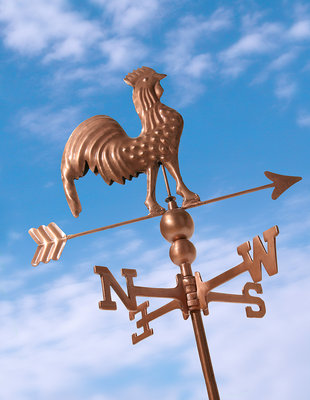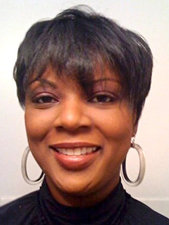Need a Sales Barometer? Check the Retail Climate.
You’ll often hear President Obama talk about his attempts to get outside “the bubble,” referring to the excessive amount of time presidents spend in the White House and surrounded by Beltway insiders. Living such an insular life, he recognizes, gives one a skewed view of reality. Like how being in a climate-controlled room with no windows can make you forget there’s a storm raging outside. Similarly, the New York Times On the Runway blog featured a post two weeks ago entitled “Bursting the Nutty Bubble” about the fashion bubble that makes those who work in designer and luxury markets forget that the real rainmakers in the garment industry are popularly priced goods, not the $15,000 handbags and $3,000 shoes to which they’ve become accustomed. In the post, the author, Guy Trebay, leaves the flurry of activity at the New York Fashion Week shows and heads for an outpost of the Nicole retail chain located in Harlem in an effort to take the temperature of real America, where thousand dollar frocks give way to outfits starting at $9.99.
Like Trebay and Obama, I’ve been making more of an effort lately to get outside my own bubble, and I’ve found it to be a worthwhile exercise. One you should try. Though I attend every show and market date I can, seeing the market from the wholesale side is only part of the story so I’ve been putting window shopping on my calendar. Whether you’re on the wholesale or retail side of our business, participating in a little retail therapy could be just the thing to lift the fog that comes from focusing solely on your collection or store. Visiting a variety of retailers — whether it’s places you’ve never shopped or long-forgotten old haunts — and taking note of brands, merchandising, displays and customer service can provide you with the customer’s view of our industry, your products and your competitors’.
Spotting a Ray of Light
Breezing into a few new stores each week could give you a new perspective on your line and how it looks when merchandised with other product. For instance, on a recent trip to juvenile products stores, I noticed a flood of goods in the same category — on the same shelves — that all have nearly identical packaging. Despite the obvious amount of time each company spent writing the marketing copy that appeared on these boxes in an attempt to make their products stand out, it’s odd that they then chose to present these goods in such startlingly similar ways.And what does this say to consumers? Does it cloud their buying decisions? Maybe these companies wanted shoppers’ mental haze to work in their favor. If there’s a leading product already on the market, maybe the other brands’ strategy is to use confusion to snap up sales. Whatever the explanation, it might be time for the market leader to move with lightening speed to introduce new box designs that put them one step ahead of the other guys. But that’s not something they’d know to do unless they saw the goods in store. At shows, product isn’t always shown in the packaging let alone side by side with competitors.
Similarly, trade shows aren’t the best places to forecast how your line will be received by the end consumer. Hanging as a cohesive collection, it can be hard to imagine how each piece will be perceived once it’s merchandised with other brands by color, size and style. Only in the retail environment can you evaluate whether the individual pieces make a statement or if they’re eclipsed by product with more presence.
Soaking Up the Insights
Once you’ve committed to visiting stores, resist the urge to make quick whirlwind trips. The longer you linger, the more you’re likely to learn. Personally I’ve received more than a few frosty looks from shop owners who wonder what I’m up to. Undaunted, I usually chill out and participate in one of my new favorite activities: eavesdropping. I love to listen in on the interactions between the sales staff and shoppers. It’s a great barometer for gauging how real moms and gift-givers shop. Plus, it’s interesting to note which products the salespeople draw shoppers’ attention to and the product info (or lack thereof) they choose to sprinkle into the conversation. Understanding what product characteristics customers seek most could help you tweak your collection. And ultimately you want to use the observations you’ve accumulated to help your retail partners extol your products’ virtues.Stepping outside your bubble could also place you firmly outside your comfort zone. Rather than finding yourself on thin ice though, you could make discoveries you never would have otherwise. For some, this leap might mean shopping at mass stores or vertical retailers. You may not sell them, but sales in these channels continue to heat up. For instance, of the shops I’ve popped into lately, one of my favorites has been CrewCuts, which is a bit surprising because I don’t shop at J. Crew. The main appeal of the kids’ store is the way in which the accessories and extras are merchandised throughout, allowing shoppers to discover new products as they go along and see them all working together in color coordinated vignettes. It seems like a small thing, but it’s a simple idea that any retailer could pull off.
Too often, I think the boutique tier, in particular, is guilty of turning a cold shoulder to other channels. Such was the case once when I reported on a consumer focus group I’d moderated. When I dared print the moms’ positive comments about Target, I received a flash flood of angry emails from the industry. To me, the outrage seemed silly; there’s no point in trying to pretend other stores don’t exist. It’s your job to figure out how to compete and differentiate yourself. Instead of showering me with negative feedback, wholesalers and retailers alike should have been taking note of what the moms had to say.Now, not every fact-finding trip will result in game-changing insight, but there’s always something you can take away from the experience even if it’s just a reminder about how much fun our segment of the market is. Ideally of course, you’ll scoop up information that will help you build a better line and become a better partner to your retail customers. So, take a moment to schedule in a few store trips this week. Who knows? You might just end up with an avalanche of new ideas.
Join me on Wednesday, September 28th at 9 p.m. for an industry chat on Twitter. Follow me @caletha_style or search for #kidsbiz.
About Caletha Crawford
To answer a need in the industry, she recently teamed up with two other children’s wear veterans to develop an online orientation seminar designed to help immerse aspiring and novice entrepreneurs get up to speed on the design, sales, production, marketing, PR and back office aspects unique to the children’s wear market.
Visit www.calethacrawford.com or email .















